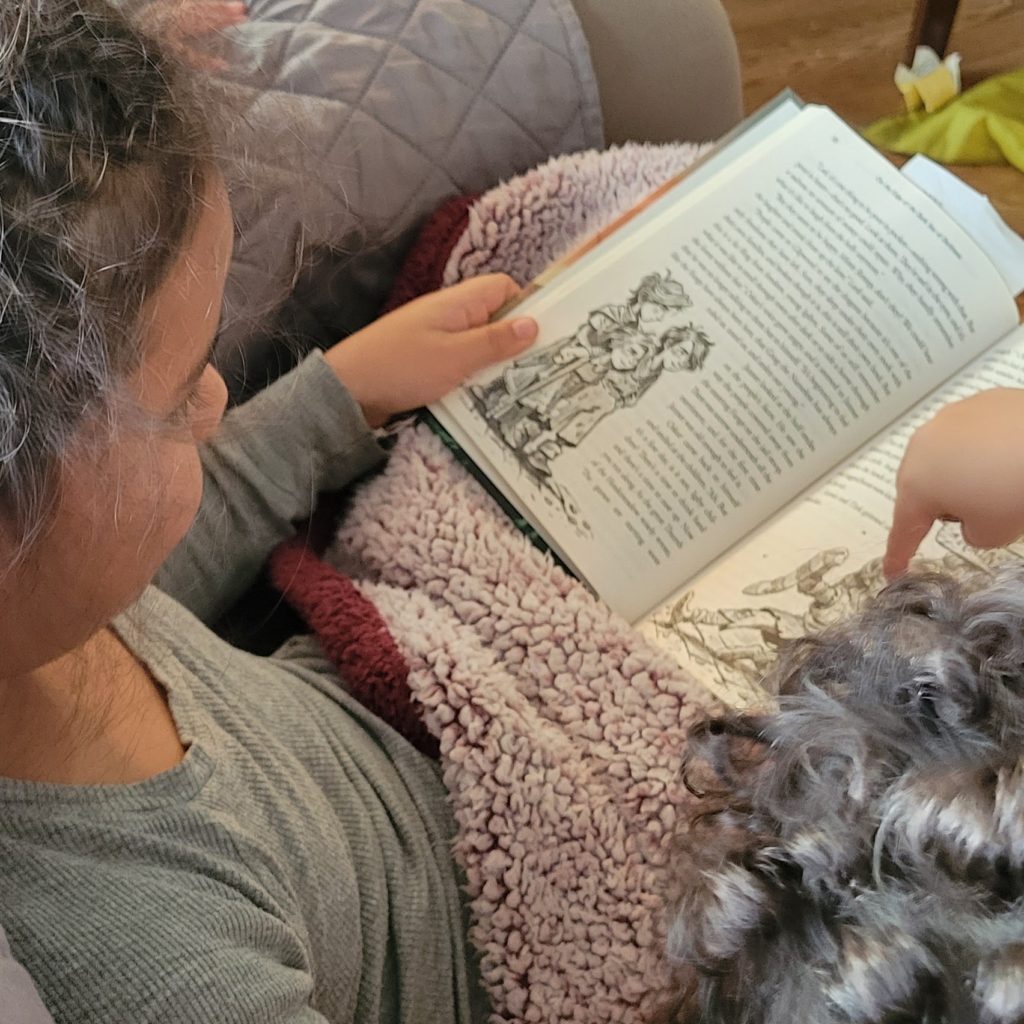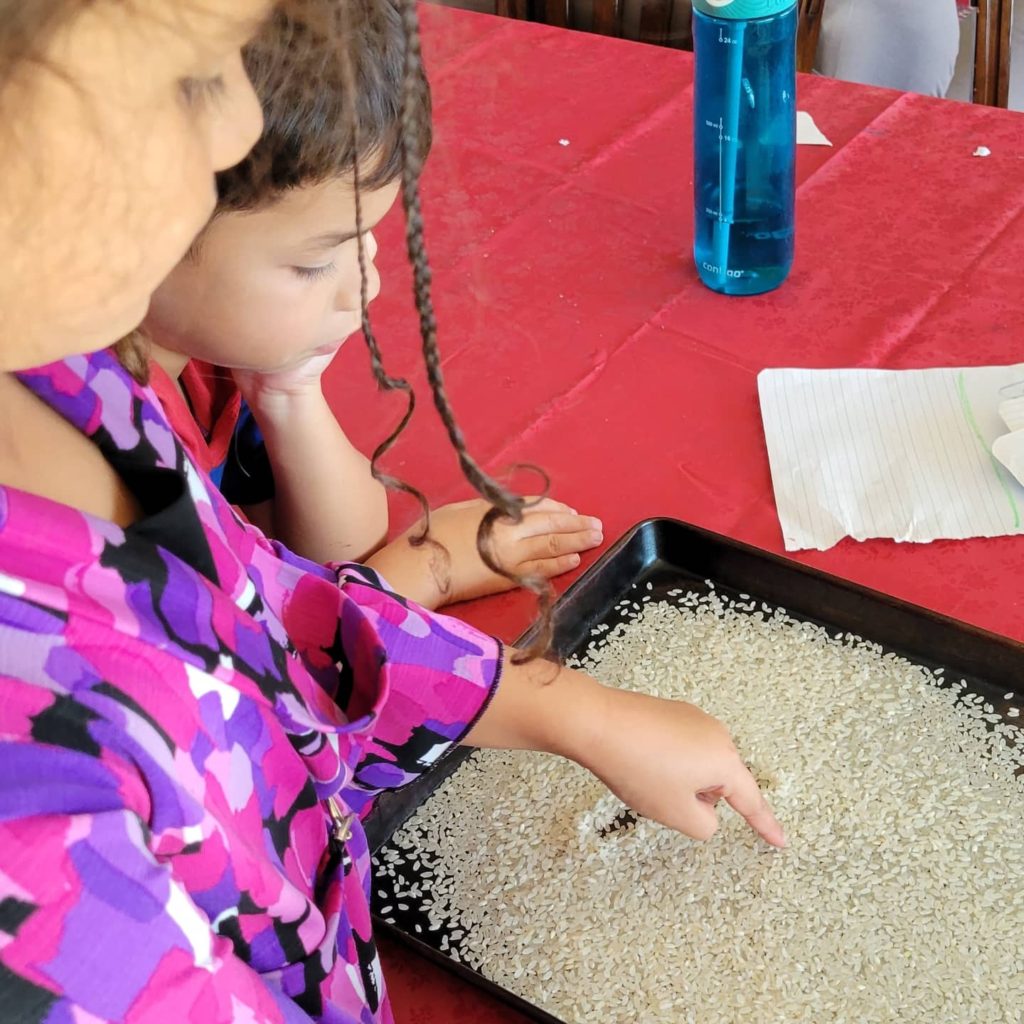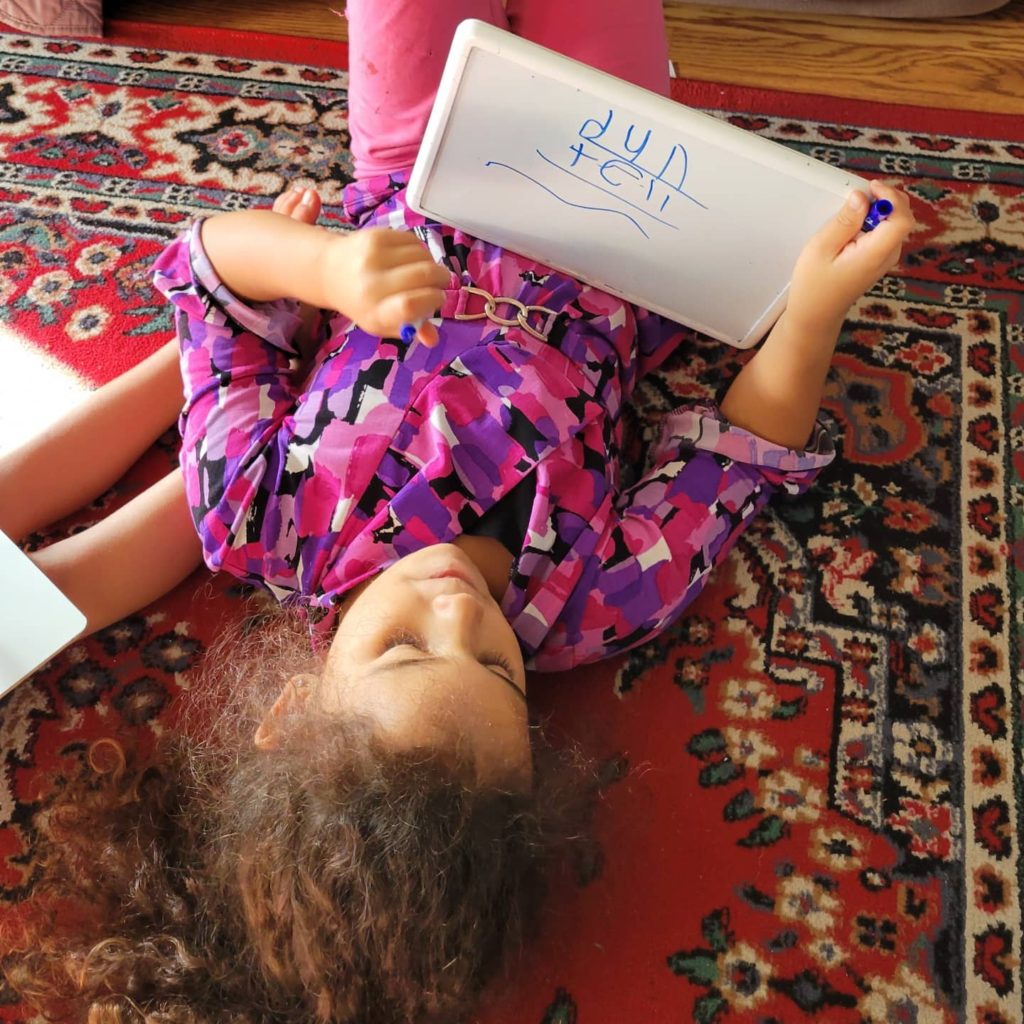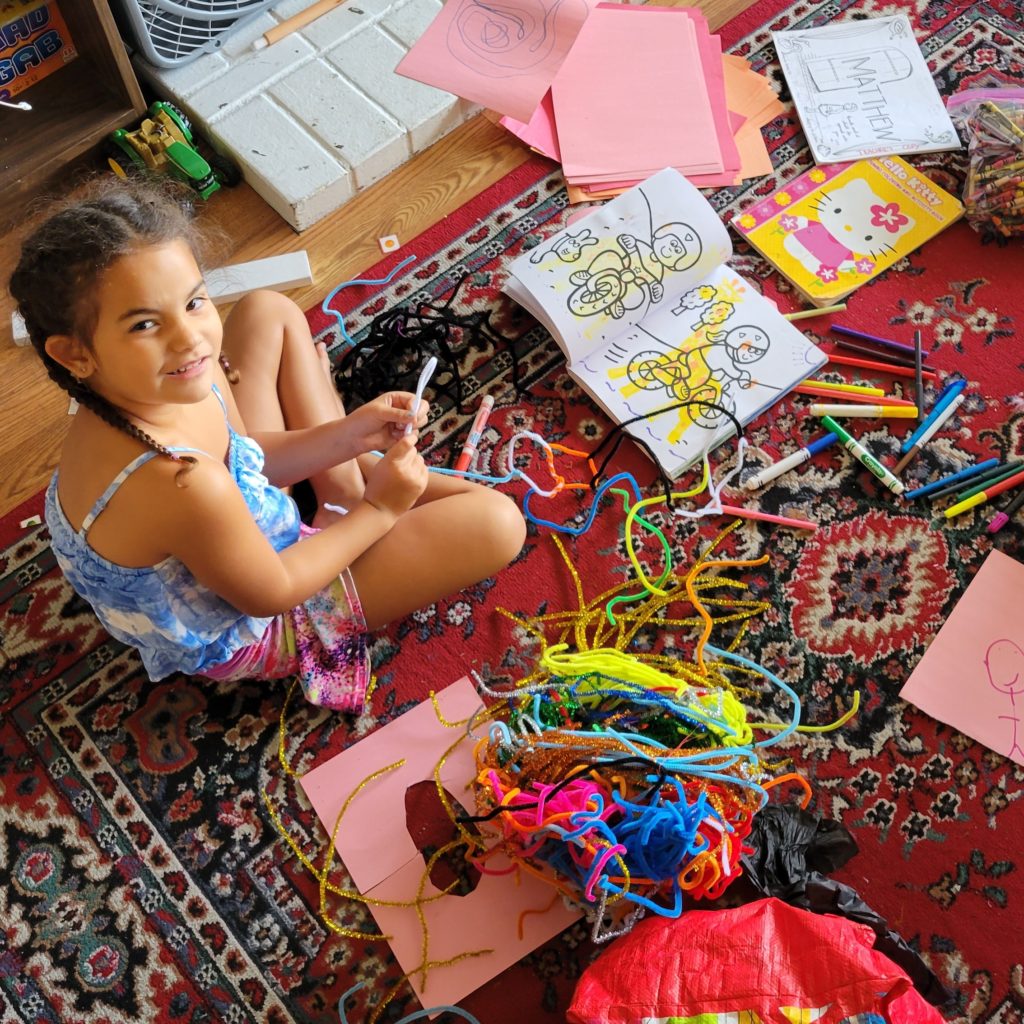When Ana Lia was four years old, she asked if I could teach her to read. Several moms whom I love and trust used “Learning to Read in 100 Easy Lessons,” so I purchased the book. I loved the way that it scripted everything for me, and the short lessons were great for us. A few weeks in, she decided that she wasn’t enjoying it, and because she was so young, it was fine for us to drop it until she was ready. I wanted to instill a love of reading in my children rather than a sense of fear and dread.
About a year later, she asked again, and we started over with the same book. As soon as we started, Eliam wanted to join us, so we did the lessons together. The lessons at the beginning of the book are particularly short, so doing them with both kids at the same time was feasible. We would usually do the lessons while Fin took a nap so that we could all focus. After 20 or 30 lessons, the stories at the end start to get longer, and they were struggling to pay attention while their sibling labored through sounding out all the words. Eventually, we changed the schedule and did the lessons after Afa arrived home from work so that I could give all my focus to the one child who was reading and then have them switch places.

This change helped, and it soon became apparent that they were learning at very different paces. Eliam could finish a whole lesson in 20 minutes, and it took Ana Lia almost 45 minutes to do the same lesson. By the time we finished, we were both frustrated and exhausted – a sure sign that we needed another change. I started splitting Ana Lia’s lessons in half. And we would take two days on the same lesson. This helped but didn’t solve the problem entirely because it still seemed like we were moving too fast. I called my mom who has been homeschooling for decades, and she told me to go back ten lessons and repeat them. This was a perfectly logical solution that helped temporarily as well.
By this time, Eliam had finished all 100 lessons, and I was quickly learning important information about my children and myself. Eliam and I learn in the same way: tell us the answer and we will remember the answer. We don’t need mnemonic devices or games. As a child, my mom was excellent at these because that’s how she learned, but I found them annoying. Ana Lia, on the other hand, needs them. She doesn’t learn in a straight line; she learns in circles, making connections along the way to the other lessons we are learning. It is beautiful, creative, deep…and slow. In order for her to learn effectively, I needed to slow down, even slower than I had been going. And I needed to find lessons that had more circles than straight lines.
By this time Ana Lia was six, and we were still struggling with letter identification. She dreaded my pulling the “100 Lessons” book down, so we decided to try a completely different type of lesson. I was using Delightful Reading 3 with Eliam, and Ana Lia loved participating in the lessons but struggled to pronounce the words that were beyond her skill level. I bought Delightful Reading 2 to use with her, and it was a game changer. (As a side note, I bought these on a Facebook group for used materials and saved a lot of money.) At first I considered starting halfway through the book since we already knew some of the letters from the first lessons, but I decided that reviewing everything would be a stronger foundation. It ended up to be the best decision. We learned the style of teaching and how to do the games. She LOVED the lessons. In fact, she would ask if we could keep going, especially when we played charades or matches with her word cards.

We had made definitive progress in that she went from hating our reading material to thoroughly enjoying it, but I realized that we were not making much progress in actually learning to read. At this point she was six years old and in first grade. If she told me that she didn’t want to learn to read, I would have dropped the subject entirely. I read aloud to the kids every day, and our Charlotte Mason lesson plans included plenty of reading material. She was exposed to quality books all the time, and we could have picked it up again when she decided she was ready. The problem was that she really WANTED to learn to read. Because she had a desire to and it was clear (again) that what we were doing wasn’t working, we needed another change.
We had recently spent a week in Tennessee with family, and as I said, my mom has decades of experience teaching children with a variety of learning styles, abilities, and needs. As I told her some of the specific challenges Ana Lia had with reading, she told me that it sounded like she had dyslexia, which opened a door to a whole new world for us. We homeschool through a charter school, so I emailed our Educational Specialist (ES) and asked to get Ana Lia tested. She called me right away and told me that some of the work samples I sent in had also made her wonder about dyslexia. Since it seemed everyone was at least thinking along the same path, we set up a PLT meeting through the charter school.
I read the book Overcoming Dyslexia before we had the PLT meeting so that I would at least be speaking the same language as the specialists we were meeting with. The book had some excellent information in it, although it was a very dense read and took an unnecessarily long time to get to the “good stuff.” I am grateful I was able to read it because it explained the steps that would likely be helpful along our reading journey that had taken a less traveled route.

As my mom’s teaching assistant for many homeschooling years, I knew that meetings at school to get students additional assistance did not always go well. I didn’t have particularly high hopes for this one, but our ES was there and I knew she would help me in any way that we needed. The reading specialist was kind and methodical. I appreciated that we spent the first part of the meeting discussing Ana Lia’s strengths and then moved to discuss the areas of struggle in reading. The specialist recommended several resources, the most important one was All About Reading. Thankfully, we were able to use charter school funds to purchase Level 1 and an additional student packet for Eliam.
When the program first arrived, I was super stressed because it seemed remedial for where we were, and I was afraid we bought the wrong level. I got back online to look at Level 2 and realized that we weren’t there, but it seemed like we were beyond the start of the book. I started looking for what lesson we could start at and realized (again) that the review would probably be helpful. We started at the beginning and moved through the first ten lessons or so doing one a day, which is faster than recommended but it solidified the foundation and gave us an opportunity to learn how to do the lessons with letters and words we already knew.
I also loved the program because it lined up with everything I had learned while reading Overcoming Dyslexia. The program is a systematic way to cover all phonics combinations, and it emphasizes repetitive word views to build fluency. There are a variety of games to play with the flash cards, and the kids love the reading lessons because they want to know if we are playing hopscotch or monsters or one of the other many fun ways they practice fluency. I tend to be very anti-worksheet, and so the worksheets are completely optional. The kids do them each day anyway, probably because they get to use scissors, but it was interesting to see how much they enjoyed a part of the program that I intended to skip entirely.

We are currently working our way through the Level 1 program, and Ana Lia’s fluency has improved dramatically. Our pace slowed so that each lesson takes 2-3 days to complete, and I have Eliam read a different book than the one recommended and complete different vocabulary exercises. It’s only our first year homeschooling with formal lessons, but I have learned so much about building a system so that each of my kids can learn in the way that is most effective for them. It has been such a privilege to walk along this journey with them.